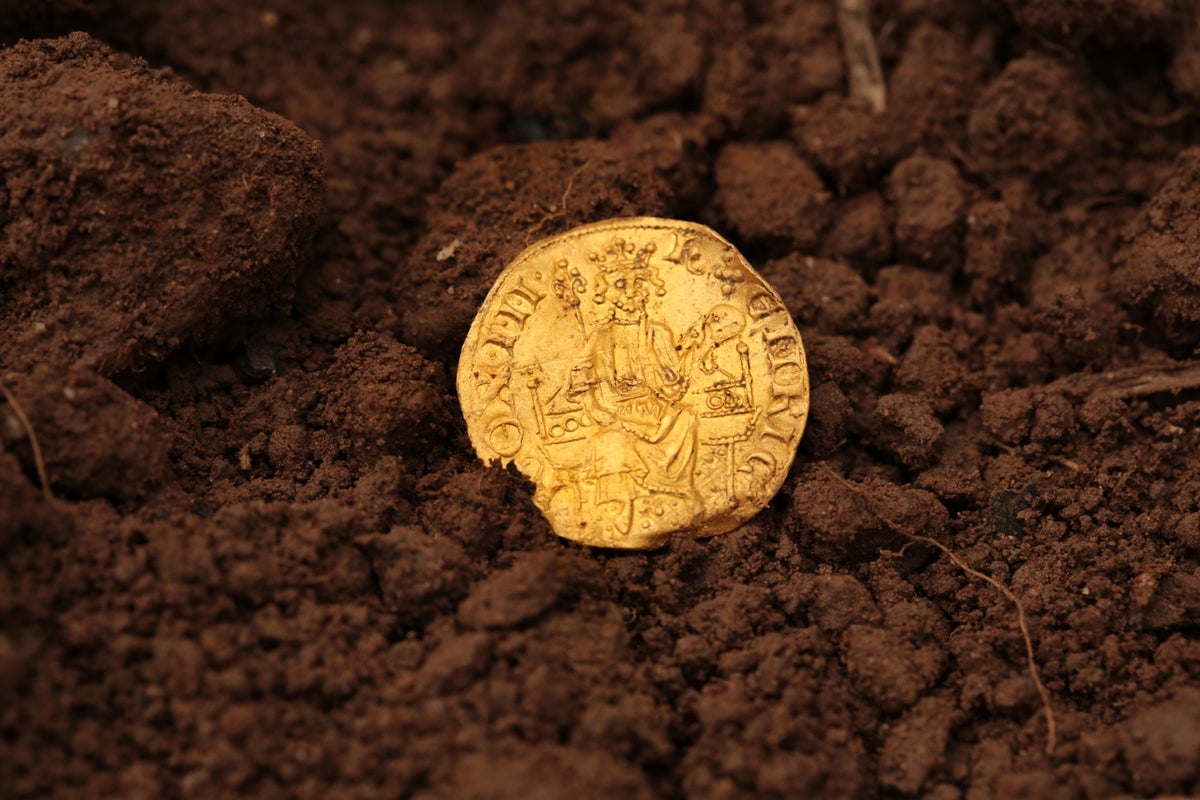
A rare gold coin showing King Henry III from the mid-13th century was sold for a world record of £648,000, months after it was discovered in a field in England by a metal detectorist.
Michael Leigh-Mallory, 52, a father-of-two from Cullompton, Devon, had lately resumed his hobby after his children prompted him. He then found the unexpected discovery on September 26 last year.
On Sunday, five months later, his find brought £540,000 at London’s Spink and Son Auctioneers. Thereby, bringing the total to nearly £650,000 after auction costs.
Gregory Edmund, a senior numismatist at Spink, believes it is the most valuable coin ever discovered in the United Kingdom.
“The £648,000 is a huge record for a British medieval coin. It’s also the record for a single coin discovered in Britain,” he told The Independent.
Seven known examples of Henry III’s gold coin

When Mr. Leigh-Mallory posted a picture of the coin on Facebook, Mr. Edmund noticed it and immediately contacted the metal detectorist.
He claimed it was the most important coin the UK recovered in 15 years. He emphasized, “I immediately appreciated its significance.”
The object’s rarity was not completely appreciated until it was transported to the British Museum for further examination.
There are only seven known examples of Henry III’s gold coin. Royal goldsmith, William of Gloucester, minted them in 1257.
The monarch, who reigned from 1216 to 1272, is depicted on a throne with a scepter and orb on one side. It has a lengthy cross and rose moldings on the other.
Short-lived thing

The majority of these pennies were melted down months after they were created. The reason being the rapid influx of gold currency debased the price of the metal.
“This coin was a very short-lived thing. It was the king’s experiment at a time of emergency when he had to pay off his campaigners in Wales,” Mr. Edmund explained.
Professor David Carpenter is a medieval historian at King’s College London. He proposed a persuasive explanation concerning the penny discovered in farmland near Hemyock, Devon, not long before the auction.
According to him, the most likely owner was John de Hyden, Lord of Hemyock Manor. He paid King Henry III 120 kilos of gold to avoid jury duty before subsequently serving in the Welsh Campaign. It was during which over 37,000 of these pennies were given.
Both experts applauded Mr. Leigh-Mallory for being honest about where he found the wealth, which allowed Mr. Carpenter to identify the item’s likely owner.
Meanwhile, Mr. Leigh-Mallory, who will split his revenues with the landowner, expressed his joy at being a part of the project. He remarked, “I remain humbled and honored to be linked with the discovery.”
The money will be spent on his children, who have acquired a keen interest in history, according to the 52-year-old. “In fact, I really owe it to them for having found the coin in the first place, as they were my inspiration to go out prospecting.”
Spink sold an NFT of the gold coin in addition to the actual coin. The earnings will be going to the Rodney Cook Memorial Fund, which supports cancer charities.






